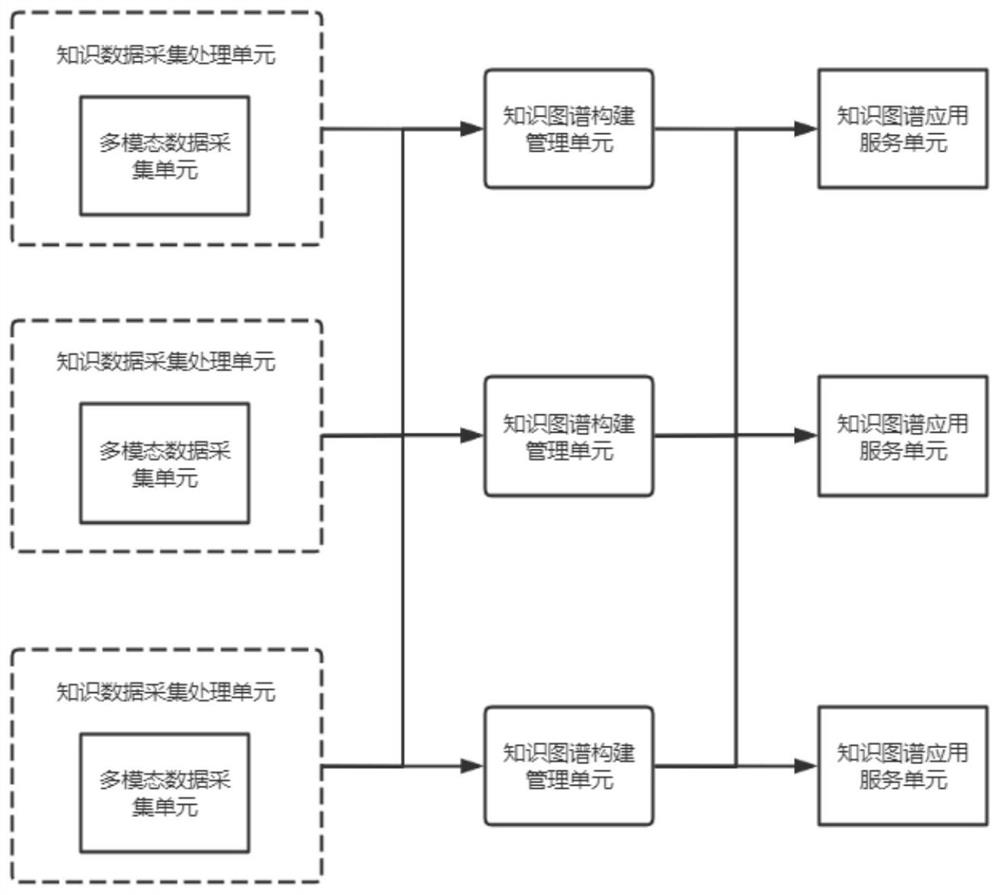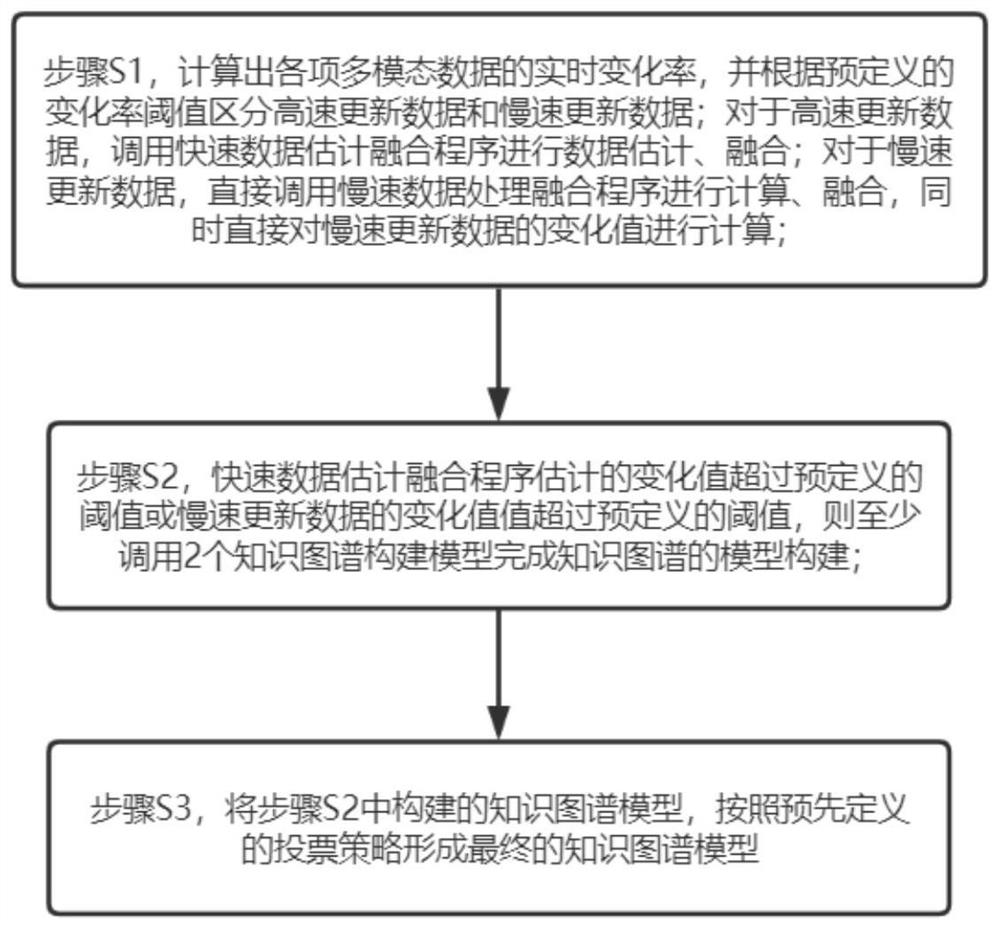Multi-modal knowledge graph construction and retrieval system and method
A technology of knowledge graph and retrieval system, applied in the field of multimodal knowledge graph construction and retrieval system, can solve problems such as low efficiency and low real-time performance, achieve high-precision fitting, improve real-time performance and efficiency, and high-efficiency knowledge graph build effect
- Summary
- Abstract
- Description
- Claims
- Application Information
AI Technical Summary
Problems solved by technology
Method used
Image
Examples
Embodiment 1
[0058] This embodiment provides a multimodal knowledge graph construction and retrieval system, such as figure 1 , the multimodal knowledge graph construction and retrieval system includes a cascaded knowledge data acquisition and processing unit, a knowledge graph construction management unit and a knowledge graph application service unit;
[0059] The knowledge data collection and processing unit is used to collect and transmit data, including a multimodal data collection unit;
[0060] The knowledge graph construction management unit is used for the construction and update management of the knowledge graph; the construction of the knowledge graph includes constructing the ontology according to the business needs, completing the knowledge fusion according to the data content and ontology structure, associating the labeled data with the ontology, and completing the knowledge graph model. the construction of;
[0061] The knowledge graph application service unit includes a kn...
PUM
 Login to View More
Login to View More Abstract
Description
Claims
Application Information
 Login to View More
Login to View More - R&D
- Intellectual Property
- Life Sciences
- Materials
- Tech Scout
- Unparalleled Data Quality
- Higher Quality Content
- 60% Fewer Hallucinations
Browse by: Latest US Patents, China's latest patents, Technical Efficacy Thesaurus, Application Domain, Technology Topic, Popular Technical Reports.
© 2025 PatSnap. All rights reserved.Legal|Privacy policy|Modern Slavery Act Transparency Statement|Sitemap|About US| Contact US: help@patsnap.com


